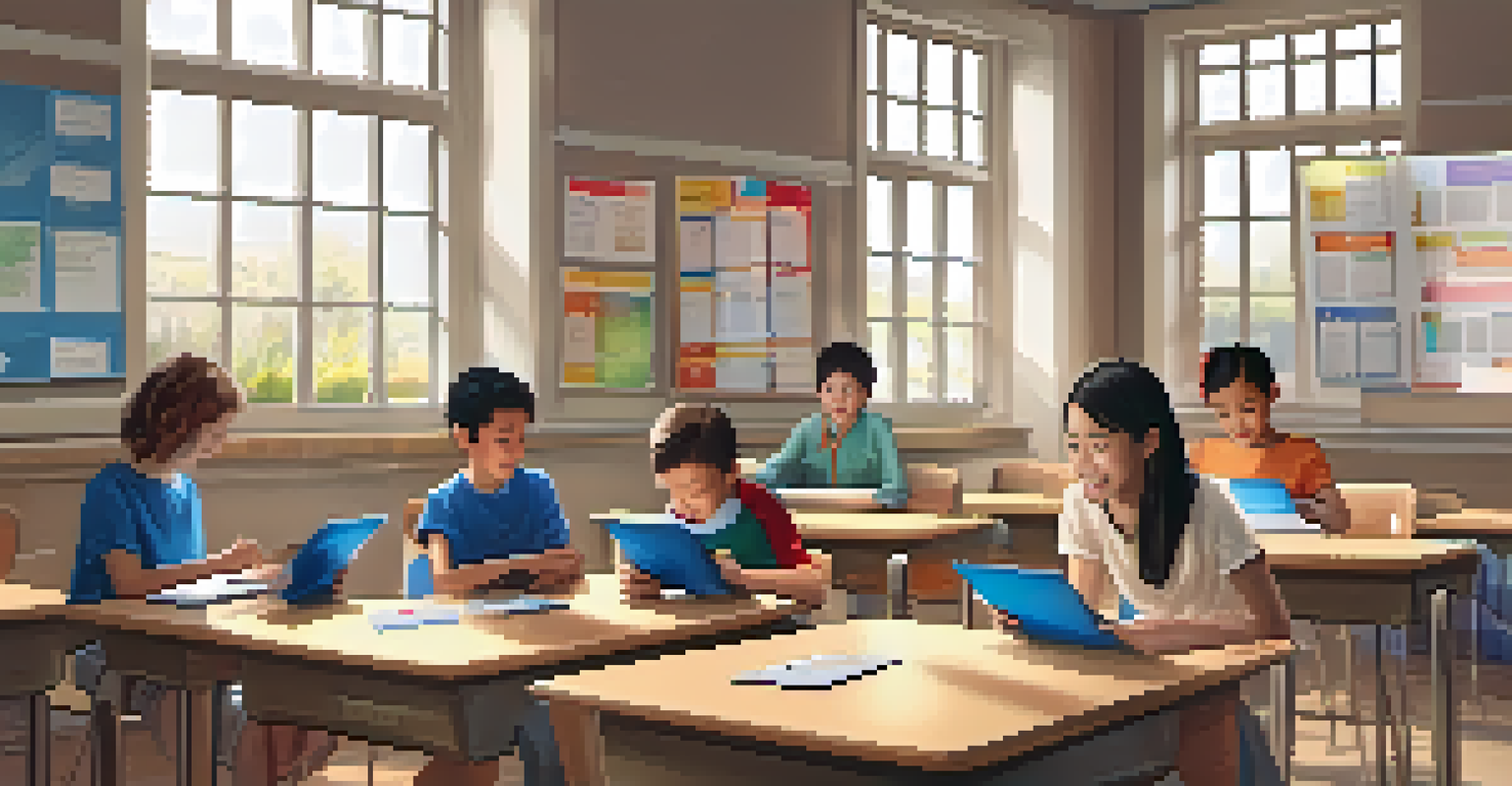AR in Learning Languages: Immersive Experiences for Students

Understanding Augmented Reality and Its Role in Learning
Augmented Reality (AR) merges the digital and physical worlds, creating interactive experiences that enhance learning. By overlaying digital information on real-world settings, AR captivates students, making the process of learning a new language more dynamic and engaging. Imagine walking through a market in France and seeing the names of items in French pop up before your eyes; this is the power of AR.
The future belongs to those who believe in the beauty of their dreams.
For language learners, AR offers a unique opportunity to immerse themselves in the culture and context of the language they are studying. Instead of just memorizing vocabulary, students can visualize and interact with words and phrases in real-life scenarios, thereby reinforcing their understanding. As a result, they can build meaningful connections with the language that extend beyond the classroom.
Moreover, AR can cater to different learning styles, providing auditory, visual, and kinesthetic learners with tailored experiences. This adaptability makes it easier for students to grasp complex language concepts, ensuring that no one is left behind in their language acquisition journey.
Benefits of AR in Language Learning Environments
One of the most significant benefits of using AR in language learning is increased engagement. Traditional methods, such as rote memorization, can feel tedious and uninspiring, but AR transforms lessons into exciting adventures. When students can interact with 3D objects and scenarios, they are more likely to retain information and stay motivated.

Additionally, AR fosters a sense of autonomy in learners. They can explore language at their own pace, revisiting challenging areas without the pressure of a classroom setting. This self-directed approach encourages students to take ownership of their learning, leading to greater mastery of the language.
AR Enhances Language Engagement
Augmented Reality transforms traditional language learning into interactive experiences that captivate students.
Lastly, AR promotes collaboration among students. Many AR applications allow users to work together in virtual environments, fostering teamwork and communication. As they navigate challenges together, students practice their speaking and listening skills in a fun, supportive atmosphere.
Examples of AR Tools for Language Learning
There are several innovative AR tools available today that can significantly enhance language learning. Applications like Google Translate offer real-time translation features, allowing users to point their devices at printed text and see the translation instantly. This tool can be particularly helpful for travelers or learners who want to practice their language skills in authentic contexts.
Technology is best when it brings people together.
Another example is AR flashcards, which bring vocabulary to life. When students hold their devices over a flashcard, they can see animations, hear pronunciations, and interact with the word's context. This multisensory approach not only aids retention but also makes learning enjoyable for students of all ages.
Lastly, immersive AR experiences, such as games and virtual environments, provide learners with opportunities to practice conversational skills. By engaging in interactive dialogues with virtual characters, students can build confidence and fluency while having fun.
Overcoming Challenges in Implementing AR in Education
While the potential of AR in language learning is immense, there are challenges to consider. One primary concern is the accessibility of technology. Not all students have access to smartphones or AR-enabled devices, which can create disparities in learning opportunities. It’s essential for educators to seek solutions that ensure all students can benefit from AR experiences.
Another challenge lies in the integration of AR into existing curricula. Teachers may feel overwhelmed by the prospect of incorporating new technology, especially if they lack training or resources. Providing professional development and support will be key to helping educators feel confident in using AR tools effectively.
AR Supports Diverse Learning Styles
By catering to auditory, visual, and kinesthetic learners, AR ensures that all students can effectively grasp complex language concepts.
Finally, it's important to address the potential for distraction that AR technology can bring. While engaging visuals can enhance learning, they can also divert attention if not used mindfully. Establishing clear guidelines and objectives for AR use in the classroom will help maintain focus and ensure that the technology serves its educational purpose.
AR and Cultural Immersion in Language Learning
Cultural immersion is a vital component of language learning, and AR can facilitate this experience even from the comfort of a classroom. By using AR, students can virtually visit places like museums, cultural festivals, or historical sites, all of which are rich in language context. This exposure helps learners understand not just the language, but also the cultural nuances behind it.
For instance, an AR application might allow students to explore a traditional Japanese tea ceremony, providing insights into the language used during the event. This kind of immersive experience helps learners appreciate the language as a living, breathing aspect of culture, making their studies more relevant.
Moreover, AR can help bridge the gap between language and cultural practices. Students can learn idiomatic expressions and colloquialisms in context, helping them communicate more naturally. By understanding the cultural backdrop of the language, learners can develop a deeper connection to both the language and the people who speak it.
Future Prospects of AR in Language Acquisition
The future of AR in language acquisition looks promising, with continuous advancements in technology. As AR tools become more sophisticated and user-friendly, it’s likely that more educators will adopt these resources in their teaching. This shift could lead to a more interactive and engaging language learning landscape that complements traditional methods.
Furthermore, as we see the integration of artificial intelligence (AI) with AR, personalized learning experiences will become even more tailored. Imagine a scenario where an AR app adjusts its challenges based on a student's skill level, providing targeted practice that meets their specific needs. This level of customization could revolutionize how individuals learn languages.
Cultural Immersion Through AR
AR facilitates cultural immersion, allowing students to explore language within its cultural context, enriching their learning experience.
Finally, as educational institutions recognize the value of AR, we may see a rise in partnerships between tech companies and schools. These collaborations could pave the way for innovative programs that leverage AR to enhance language education on a larger scale, making immersive learning accessible to all.
Conclusion: Embracing AR for Language Learning Success
In conclusion, Augmented Reality offers exciting possibilities for enhancing language learning experiences. By immersing students in interactive environments, AR not only makes learning more engaging but also helps deepen their understanding of language and culture. As educators and learners embrace this technology, the future of language acquisition looks brighter than ever.
Adopting AR tools requires a willingness to adapt and explore new methods, but the potential rewards are well worth the effort. With the right resources and support, both teachers and students can unlock new levels of language proficiency and cultural appreciation through AR.

Ultimately, the goal of language learning is to communicate effectively and connect with others. By integrating AR into language education, we can create more meaningful and impactful learning experiences that empower students to achieve their language goals.